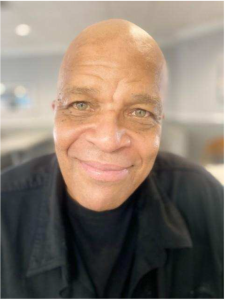Construction Training

The concrete industry is a vital part of the American economy, providing jobs and infrastructure for millions of people. However, minorities are underrepresented in this industry, making up only 13% of the workforce. This lack of representation has a number of negative consequences, including:
● Minorities are less likely to have access to the training and education they need to succeed in the concrete industry.
● Minorities are less likely to be promoted to leadership positions in the industry.
● The concrete industry is missing out on the talent and skills that minorities have to offer.
There are a number of things that can be done to increase minority representation in the concrete industry, including:
● Providing more vocational exposure to minorities. This can be done through programs that introduce young people to the concrete industry and provide them with the opportunity to learn about the different careers that are available.
● Removing barriers to entry for minorities. This includes things like providing financial assistance for training and education, and making sure that hiring practices are fair and impartial.
● Creating a more inclusive culture in the concrete industry. This includes things like making sure that minorities are represented in leadership positions and that they feel welcome and respected in the workplace.
Increasing minority representation in the concrete industry is important for a number of reasons. It will help to ensure that everyone has the opportunity to succeed in this field, and it will also help to make the concrete industry more competitive and innovative.
Here are some specific examples of how vocational exposure to the concrete industry can benefit minorities:
● It can help them to develop the skills and knowledge they need to get a job in the industry.
● It can help them to network with people who can help them to find a job.
● It can give them a sense of pride and accomplishment in learning a new skill.
● It can open up new opportunities for them in their careers.
If you are interested in getting involved in efforts to increase minority representation in the concrete industry, there are a number of things you can do. You can volunteer your time to a program that provides vocational exposure to minorities, or you can donate money to a organization that is working to increase minority representation in the industry. You can also simply spread the word about the importance of this issue.
Every little bit helps, and together we can make a difference.
 “I would often go to my uncle Zeke’s house and see a large heavy metal pan. Eventually , I realized that this pan was used to houd mix concrete, I was around nine years old. From there I would keep the large pan and concrete trowel machine cleaned weekly.”
“I would often go to my uncle Zeke’s house and see a large heavy metal pan. Eventually , I realized that this pan was used to houd mix concrete, I was around nine years old. From there I would keep the large pan and concrete trowel machine cleaned weekly.”Steve B. Godwin
Steve started doing odd concrete labor jobs at the age of 9 . Steve worked these odd jobs until high school and became interested in architecture . After attending Va. State University and studying architecture, he found himself gravitating back to concrete . He started a small concrete business in 1984 and was certified by the Army Corp of Engineers in slab on grade construction He eventually went on to work with several larger international General Contractors as a concrete labor foreman , Superintendent , and eventually Concrete Manager. . In 2009 Steve was certified as a OSHA 30 recipient through Balfour Beatty USA. In 2009 Steve was critical in starting Acosta Construction and Concrete and is consulting several DBE, MBE firms in the construction industry.

“I would often go to my uncle Zeke’s house and see a large heavy metal pan. Eventually , I realized that this pan was used to houd mix concrete, I was around nine years old. From there I would keep the large pan and concrete trowel machine cleaned weekly.”
Steve B. Godwin
Steve started doing odd concrete labor jobs at the age of 9 . Steve worked these odd jobs until high school and became interested in architecture . After attending Va. State University and studying architecture, he found himself gravitating back to concrete . He started a small concrete business in 1984 and was certified by the Army Corp of Engineers in slab on grade construction He eventually went on to work with several larger international General Contractors as a concrete labor foreman , Superintendent , and eventually Concrete Manager. . In 2009 Steve was certified as a OSHA 30 recipient through Balfour Beatty USA. In 2009 Steve was critical in starting Acosta Construction and Concrete and is consulting several DBE, MBE firms in the construction industry.
